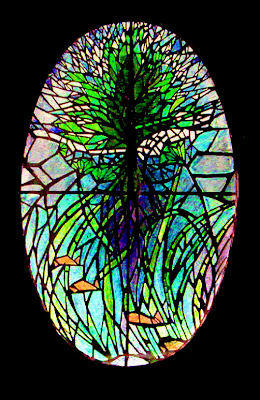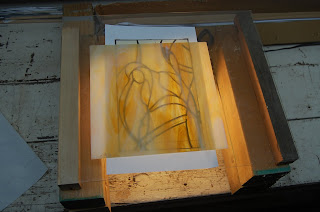Value Study
Early Development: First segment drawing of the ice crystal
laden shrub at the edge of the front yard fish pond.
Further development of the image suggests oval and
circular design possibilities. When the upper panel is
fabricated in Dalles de Verre, the shrub will measure 7 ft.
tall. The total panel will extend to 16 ft. tall.
These oval and circular concept drawings, derived
from the original sketch, keep the lowest values at the
heart of the shrub and graduate to higher values at the
outer edges.
by holding the highest values at the heart of the design
and graduating to the lower color values at the outer edges.
The embedded, strong geometric armature, the powerful
and ancient geometry of the Squaring of the Circle,
bridges the white-hot spiritual fire at the center to
physical intensity and passion at the outer edge.
This design, when realized in Dalles de Verre,
will measure 6 ft. in diameter.
These designs are awaiting a commission.
These designs are awaiting a commission.









































